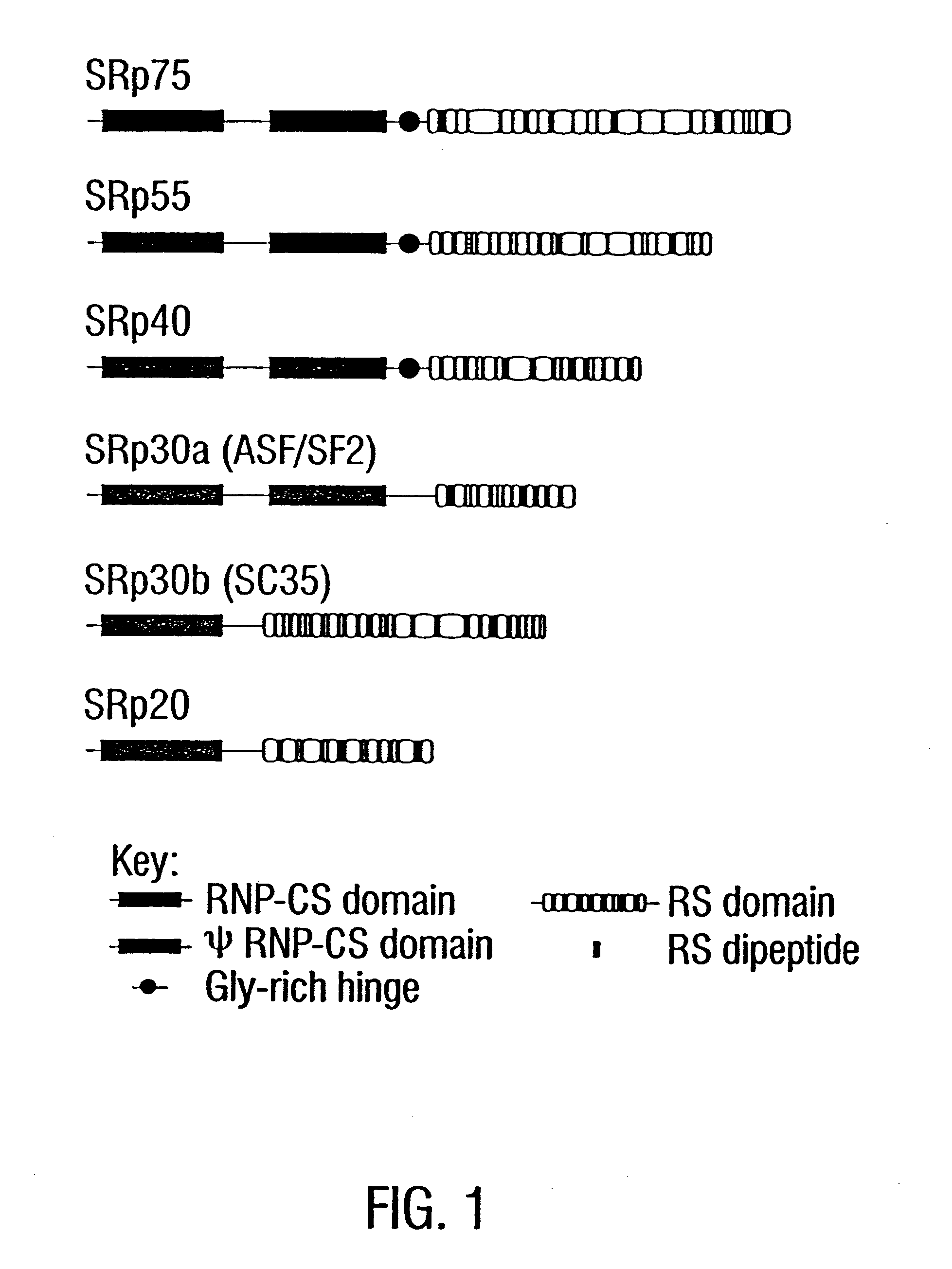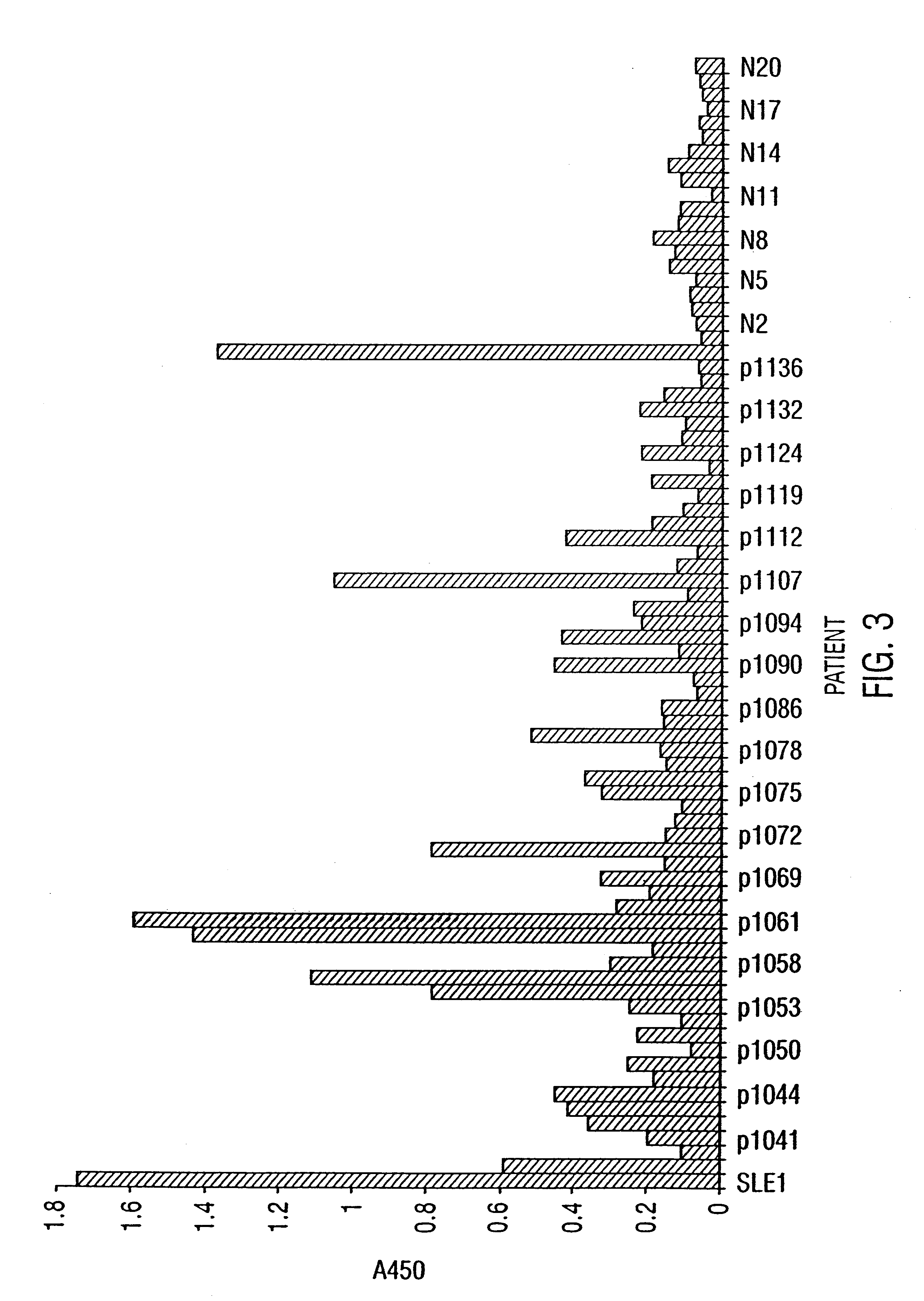Method of diagnosing autoimmune disease
a technology of autoimmune disease and diagnosis method, which is applied in the field of diagnosis of autoimmune disease, can solve the problems of large discomfort and pain in patients, inability to find a patient, and limited criteria
- Summary
- Abstract
- Description
- Claims
- Application Information
AI Technical Summary
Problems solved by technology
Method used
Image
Examples
example 1
Materials & Methods
A. Purification and Microsequencing of SR Proteins
Protein purifications were carried out as described in Zahler et al., 1992, and are incorporated herein by reference. The purification was started with 1.times.10.sup.10 HeLa cells or 100 grams of calf thymus. Cells and tissues were ground to a fine powder in Liquid N.sub.2 using a mortar and pestle. The powder was then transferred to a beaker on ice, and 350 ml of isolation buffer was added (isolation buffer is 65 mM KCl, 15 MM NaCl, 10 mM HEPES at pH 7.6, 10 mM Na.sub.2 EDTA, 5 mM potassium fluoride (KF), 5 mM .beta.-glycerophosphate, 0.2 mM PMSF, and 2 .mu.g / ml of aprotinin). Tissue culture cells were sonicated 10 times for 20 sec with a probe sonicator set at 50 W; thymus was sonicated continuously for 20 min. Homogenates were centrifuged for 20 min at 8000.times.g, supernatants were transferred to a beaker, and ammonium sulfate was added to 65% of saturation. After 2 h of stirring at 4.degree. C., the extract ...
example 2
Results & Discussion
Results
To determine whether SR proteins are autoantigens in any of a variety of diseases, an ELISA assay was developed. Human SR proteins were purified to homogeneity from HeLa cells grown in suspension and used to coat immunoplates at concentrations ranging from 0.5 to 2 mg / ml. At these coating concentrations, a monoclonal antibody (mAb) specific for the SR protein family, mAb1H4 (Neugebauer and Roth, 1997), gives a robust signal in the ELISA assay. In contrast, mAb Y12 against the Sm epitope gives no signal above background, indicating that the SR protein preparation is not detectably contaminated with snRNPs.
The inventor performed an ELISA assay for SR protein reactivity on sera obtained from patients with SLE, APLS, MCTD, PSS and Sjorgens syndrome. FIG. 2 and FIG. 3 show the presence of autoantisera against SR proteins at a 1:50 dilution and 1:200 dilution respectively. These data provide clear evidence of the presence of anti-SR protein antibodies in patient...
PUM
 Login to View More
Login to View More Abstract
Description
Claims
Application Information
 Login to View More
Login to View More - R&D
- Intellectual Property
- Life Sciences
- Materials
- Tech Scout
- Unparalleled Data Quality
- Higher Quality Content
- 60% Fewer Hallucinations
Browse by: Latest US Patents, China's latest patents, Technical Efficacy Thesaurus, Application Domain, Technology Topic, Popular Technical Reports.
© 2025 PatSnap. All rights reserved.Legal|Privacy policy|Modern Slavery Act Transparency Statement|Sitemap|About US| Contact US: help@patsnap.com



